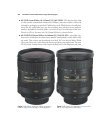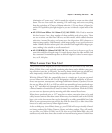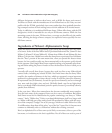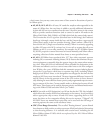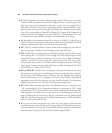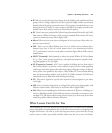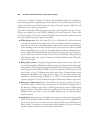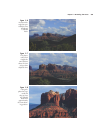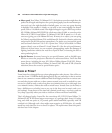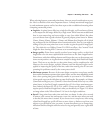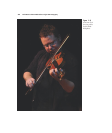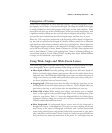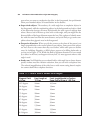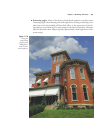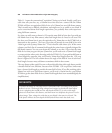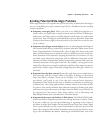■ More speed. Your Nikon 70-300mm f/4.5-5.6 telephoto zoom lens might have the
perfect focal length and sharpness for sports photography, but the maximum aper-
ture won’t cut it for night baseball or football games, or, even, any sports shooting
in daylight if the weather is cloudy or you need to use some ungodly fast shutter
speed, such as 1/4,000th second. You might be happier to gain a full f/stop with an
AF-S Nikkor 300mm f/4D IF-ED for a little more than $1,000, or even the pricier
Nikon AF-S VR II Zoom-Nikkor 70-200mm f/2.8G VR II mated to a 1.4x tele-
converter (giving you a 98-280mm f/4 lens). If money is no object, you can spring
for Nikon’s superfast 400mm f/2.8 and 600mm f/4 (both with vibration reduction
and priced in the $6,500-and-up stratosphere). Or, maybe you just need the speed
and can benefit from an f/1.8 or f/1.4 prime lens. They’re all available in Nikon
mounts (there’s even an 85mm f/1.4 and 50mm f/1.4 for the real speed demons).
With any of these lenses you can continue photographing under the dimmest of
lighting conditions without the need for a tripod or flash, or boosting the ISO to
noise-producing levels.
■ Special features. Accessory lenses give you special features, such as tilt/shift capa-
bilities to correct for perspective distortion in architectural shots. You’ll also find
macro lenses, including the new AF-S Micro-Nikkor 60mm f/2.8G ED, fisheye
lenses like the AF DX Fisheye-Nikkor 10.5mm f/2.8G ED, and all VR (vibration
reduction) lenses also count as special-feature optics.
Zoom or Prime?
Zoom lenses have changed the way serious photographers take pictures. One of the rea-
sons that I own 12 SLR film bodies dating back to the pre-zoom days is that in ancient
times it was common to mount a different fixed focal length prime lens on various cam-
eras and take pictures with two or three cameras around your neck (or tucked in a cam-
era case) so you’d be ready to take a long shot or an intimate close-up or wide-angle view
on a moment’s notice, without the need to switch lenses. It made sense (at the time) to
have a half-dozen or so bodies (two to use, one in the shop, one in transit, and a cou-
ple backups). Zoom lenses of the time had a limited zoom range, were heavy, and not
very sharp (especially when you tried to wield one of those monsters hand-held).
That’s all changed today. Lenses like the razor-sharp AF-S VR II Zoom-Nikkor 70-
200mm f/2.8G IF-ED boast longer zoom ranges, in a package that’s about 8.5-inches
long, and while not petite at 3.2 pounds, quite usable hand-held (especially with VR
switched on). Although such a lens might seem expensive at $2,200-plus, it’s actually
much less costly than the six or so lenses it replaces. I’ll explain more about this partic-
ular lens later in the chapter.
David Busch’s Nikon D7000 Guide to Digital SLR Photography360



